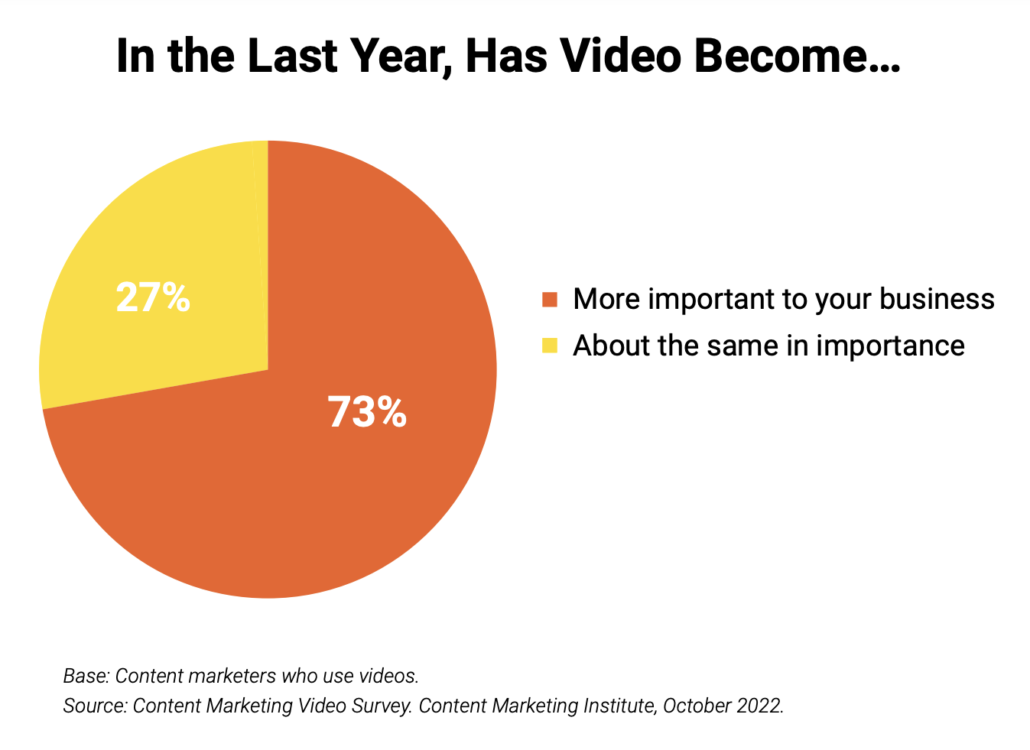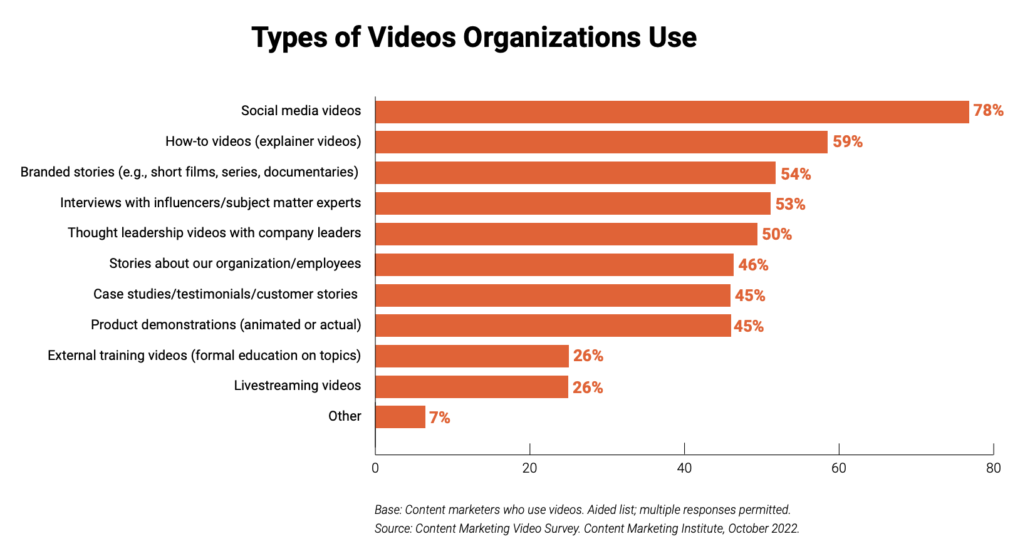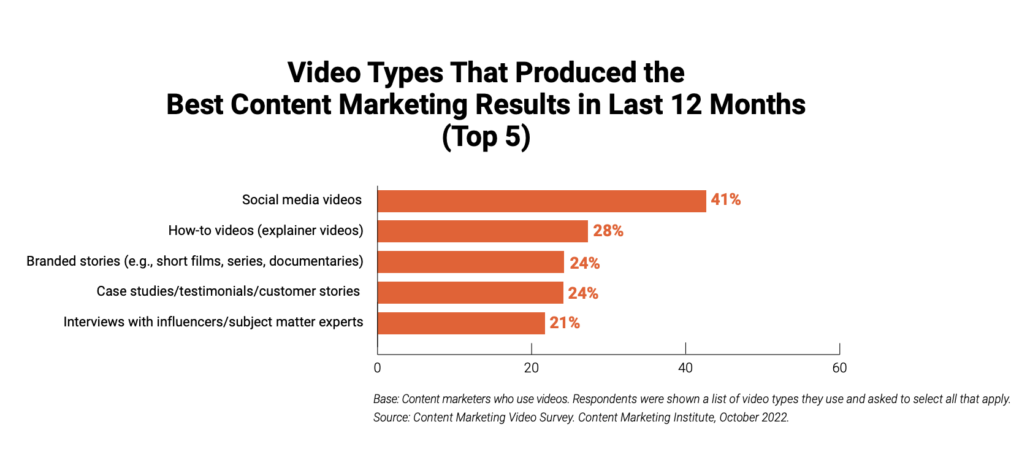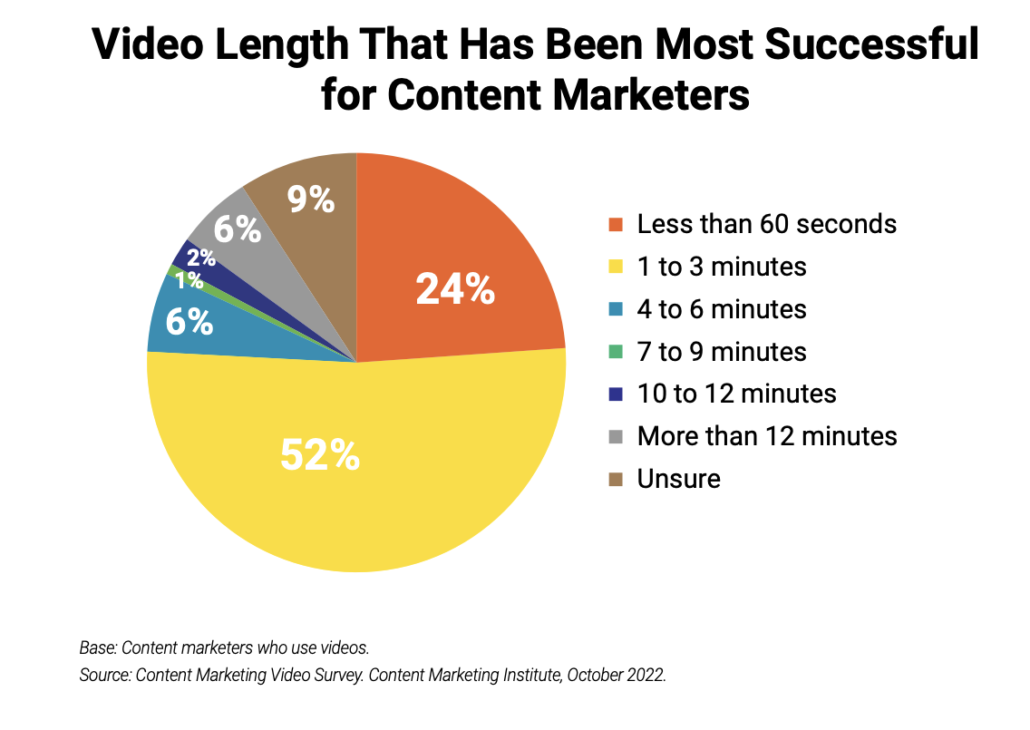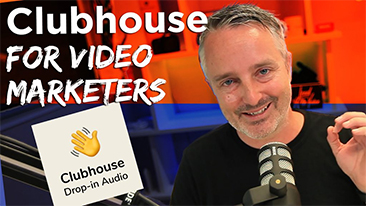 https://innovatemedia.com.au/wp-content/uploads/2021/02/How-to-Use-Clubhouse-for-Video-Marketing.jpg
206
366
innovatemedia
https://innovatemedia.com.au/wp-content/uploads/2021/12/innovate_media_logo-black.png
innovatemedia2021-02-17 16:14:582024-05-09 17:22:26How to Use Clubhouse (for Video Marketing)
https://innovatemedia.com.au/wp-content/uploads/2021/02/How-to-Use-Clubhouse-for-Video-Marketing.jpg
206
366
innovatemedia
https://innovatemedia.com.au/wp-content/uploads/2021/12/innovate_media_logo-black.png
innovatemedia2021-02-17 16:14:582024-05-09 17:22:26How to Use Clubhouse (for Video Marketing)What do 344 business content marketers think about using the power of video as we move into 2023? In this article, I review insights here from a recent survey.
The use of video as a marketing tool has exponentially increased over the last few years, but the question is has it been used to its full potential?
Before we get into the insights, let’s clarify the details of the survey.
- The survey was conducted by Content Marketing Institute and Vidyard between Aug – Sept, 2022.
- There were 344 respondents, of which 46% were B2B, spread between micro business and 1000+ employee companies.
- 82% of the respondents were based in North America.
- The industries were very widely based around technology agencies, healthcare, manufacturing, professional services.
From the 2021 version of the report, most content marketers agree that video remains vital to their organisations, but many still do not realise the full benefits of adding video to their content marketing strategy. Apparently, more organisations are upping their video production budgets and bringing production in-house. So the real opportunity here is to hire or train video content creators over video producers.
This is really interesting because it’s definitely the trend that we’ve seen happening across the industry for a number of years as the cost or the investment required in getting video content production equipment into organisations has basically disappeared. In fact, many organisations now are very equipped to be able to produce content in-house, but what’s really lacking here I believe is the training and the strategic advice behind that, and that comes out in this report as well.
So let’s examine several survey questions of the report.
In the last year, has video become either more important to their business or about the same in importance?
And the respondents answered here that 73% of businesses believe that video has become more important to their business over the last year.
What this really means is that if your organisation isn’t investing in video that your competitors probably are, because it really is no longer a question of whether or not you should be doing business in your video.
It’s a question of how much video are you doing and how are you utilising video within your business?
What types of videos are organisations using?
The majority of businesses with over 78% answered social media videos. Obviously that’s a fairly generic kind of catchall term, but, when we combine that social media videos with the second highest response, which was ‘How-To’ videos or ‘Explainer Videos’, we can see that businesses are using video as a content marketing tool. Less for advertising and more so, as adding value to their organisations’ target audience rather than just trying to invoke some kind of direct response.
We can see that, that is the way video has been shifting across a number of years. So, video has basically become everywhere on social media platforms. So really no surprises there.
What video types produced the best content marketing results in the last 12 months?
Here marketers said that social media videos are the video type that produced the best content marketing results with 41% focused on that. But I want to highlight here that the question was somewhat skewed in the fact that they specifically mentioned what video types produce the best content marketing results. So, if you’re focused on content marketing as the primary goal for the videos in your business, then clearly you’re going to be saying that social media videos or explainer videos and those kinds of content marketing focused videos are going to be most effective at achieving the goal of content marketing. So a bit of a content marketing skew in this report, which is to be expected, based on the fact that it was put together by the Content Marketing Institute, but still great results there.
How are organisations actually producing videos for content marketing?
Here, 69% of organisations surveyed said that they are mostly producing content in house. Again, that’s the trend that I’m seeing across organisations around the world. Many companies are seeing the value in bringing content marketing video production in house. In fact, only 24% of those surveyed said that they were mostly outsourcing their production.
Does your team have the right video production equipment or editing tools to do their job effectively?
55% of respondents answered that yes, they do have the tools that they need to do their job effectively in-house, because not surprisingly, it’s not expensive anymore. Companies don’t need to invest very heavily in loads of equipment in order to produce high quality content in-house. In fact, much can be achieved just with smartphones or DSLRs, webcams and the like. It’s no longer about the gear.
The gear is not what’s holding people back. In fact, what is holding people back – I believe – is just not knowing what they need to do with their videos in order to get a return on investment for their video spend.
What social platforms do content marketers create and post videos on?
YouTube is an overwhelming majority here with 86%, but also 76% are using LinkedIn. And this is, I guarantee you, a rising number from the previous 2021 report. More and more people are investing in video content for LinkedIn. Facebook is, I believe, a declining number. It’s 70%. So LinkedIn is higher, more highly used as a social media platform for video than Facebook now, but also showing is the rise of TikTok. TikTok is growing 19% of content marketers using TikTok for video marketing as well.
So at 19%, I am predicting that you are going to see that channel grow as we move into 2023 and then into 2024. Watch that one as we go.
What video length has been most successful for content marketers?
Around 76% of respondents said that videos less than three minutes are most successful. Does that mean that long form content is dead? No, it doesn’t. It means that depending on the goal for the video and the platform that you’re distributing that content on, there is still a role for longer videos. But for most content marketing based videos used on social media platforms, you really want to be hitting between that sixty second and three minutes sweet spot, I believe, and in certain platforms aiming for that under sixty seconds as well.
What percentage of videos are created for the different stages of the buyer’s journey?
I think this is a really interesting point. When we are looking at video strategy, there are different types of videos that are used for different stages of the buyer’s journey. 46% of videos answered by their respondents here are being used in the brand awareness stage designed for getting to know the organisation. Then the consideration stage is another 23%. So what’s that 69% in total between that top of funnel brand awareness and, what I call the consideration or the social engagement phase there?
The majority of videos for the purpose of content marketing are used in that stage. Again, not surprising as we move to the buying stage or the conversion stage of the customer journey, with 16% and then the post-purchase training or customer relationship, with only 15% of respondents there.
What is important is to really recognise that there is value in videos, as a content marketing tool at the top and the middle of the sales funnel, and that is where most organisations are focusing their time and attention.
I think that the rest of the funnel is potentially underutilised in many cases.
So don’t forget about the power of using video in the conversion and in the advocacy stages of that customer journey as well, because it can be very, very powerful.
Regarding video, what results are most important to your organization at the present time?
The majority of answers here, in fact it was split between creating human connection and informing their customers. So again, that is the top and middle of funnel goals that can be impacted by that human connection, that emotional connection that video can create. And also educating, informing and inspiring people, which is in the middle of the funnel. The way that businesses are using video across their organisation really aligns with that top and middle of the funnel
Which of the following statements about video in your organisation is most accurate?
43% of respondents said that our key audience consumes videos, but they don’t seem to prefer video over other content types. I think that is not surprising because video is just one content type as part of a whole marketing mix. It can’t be seen as the be all and end all. It needs to be considered as part of the overall marketing strategy for a business. So the key takeaway here is to consider video as part of a marketing mix. The phrase I like to refer to is “everything’s better when it works together.” So think about video in that respect as well.
Is your organisation using existing videos to its full potential?
The big overwhelming majority here of 66% of respondents said their organisation is ‘not yet using video to its full potential, but we’re getting there’. Businesses are seeing the power of video, they’re using video across their organisation, but they’re still trying to figure out how to use videos to their full potential.
What results are organisations getting with their video?
The overwhelming majority of 70% said that they’re getting average results, that it’s just meeting their expectations. Why? read on.
What would your organisation need to get better results with video?
59% of respondents said that a video strategy is needed to get better results with video. Only 15% of respondents said that they’re getting excellent results with video. So there’s so much opportunity here for businesses and organisations to improve in video strategy and for video strategists, like Innovate Media to come alongside and help them get there.
How much organisations spend on video creation in one year?
Of the respondents of this survey, over 44% said that they spend between $10,000 to $100,000 or more. The majority are actually spending less than $10,000 in the year. That is a bit of a spread across organisations, but then the respondents were a spread from micro businesses up to enterprise level businesses.
How video budgets are planning to be increased into 2023?
Here 42% of marketers said that their 2022 video budget was more than their 2021 video budget. So you can see budgets are increasing according to these respondents. And 64% expect that their video budget will increase further in 2023 as compared to 2022 and 26% of those expected to increase by more than 9%. Overall, 74% think that their organisation needs to invest more in video. Of course, I agree there.
What are their organization’s biggest video marketing challenges?
To wrap up the survey, the last question that was asked of marketers was an open-ended question around what are their organization’s biggest video marketing challenges. One respondent said that ‘being able to plan and strategise the right videos versus servicing the flood of video requests that come in’ is their biggest video marketing challenge. Another one responded to say that ‘a cohesive strategy and consistency’ are their biggest challenges. A third respondent said ‘organising and coordinating of internal resources to put together a programme and collect information to produce quality content because everybody is always busy and a video strategy requires commitment and time of people who know the subjects that we want to talk about’.
It all points to a clear need for strategy when using videos in a content marketing mix.
I want to thank Vidyard and Content Marketing Institute for putting together this research and bringing it to us in a way that helps us as video strategists communicate where businesses heads are at with videos.
Ben Amos
Creative Director, Innovate Media
Innovate Media offers powerful brand story and client testimonial (case study) social media video marketing packages for businesses on the Sunshine Coast and across Australia. Check out these services we offer and see which suits your needs https://innovatemedia.com.au/video-marketing-services/

